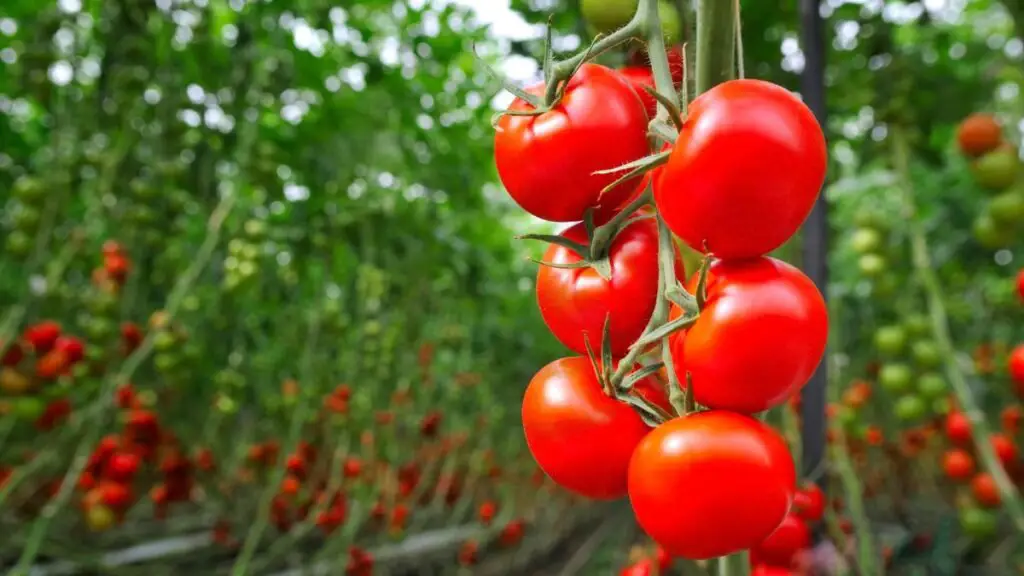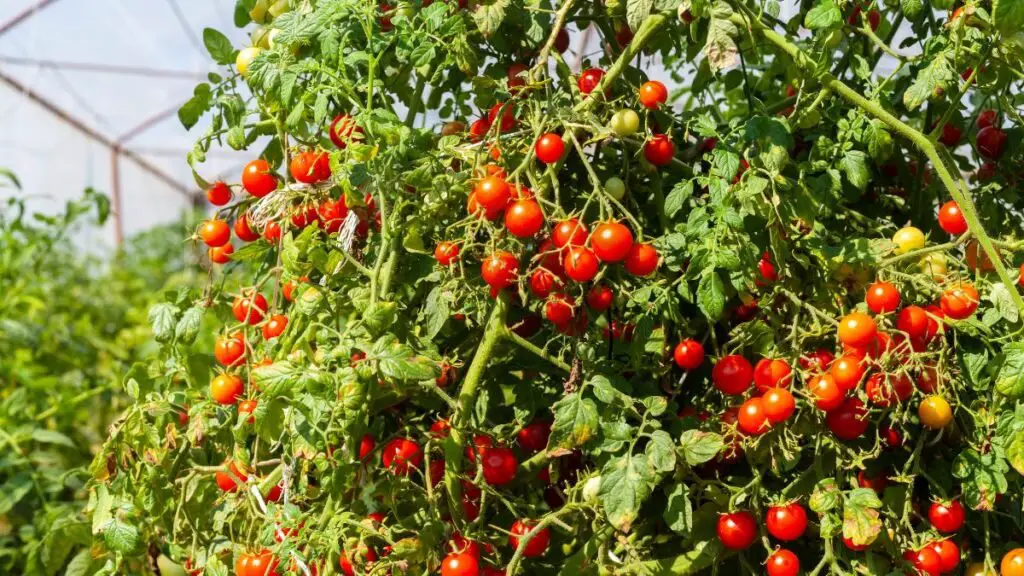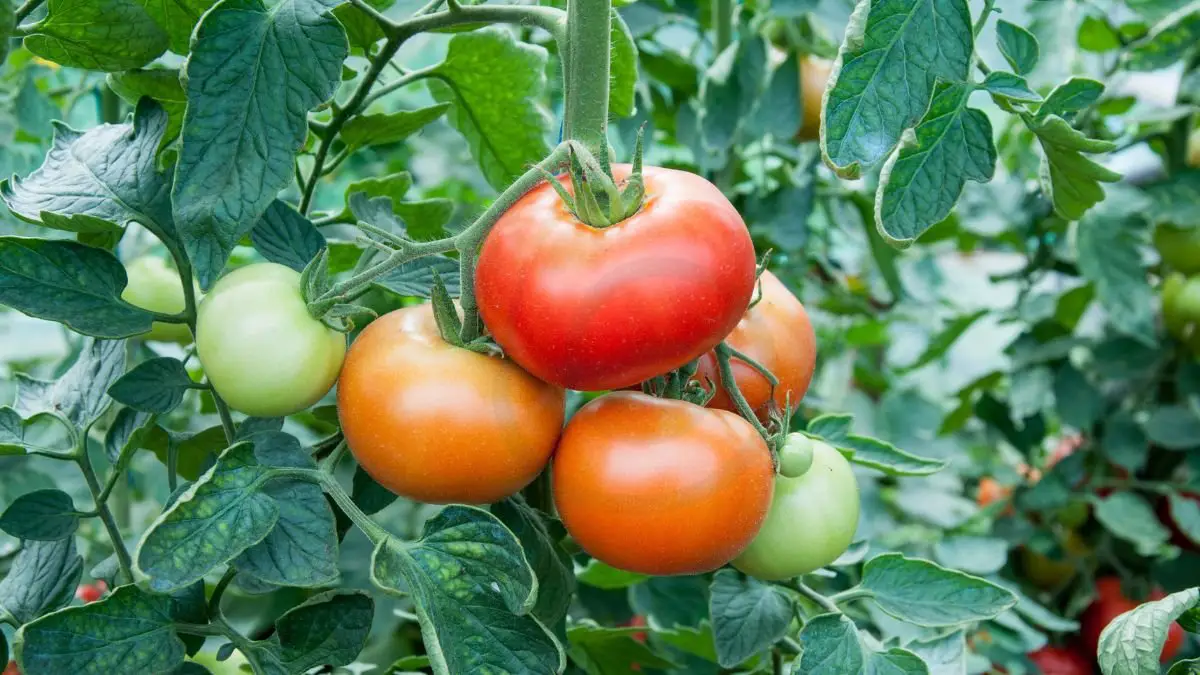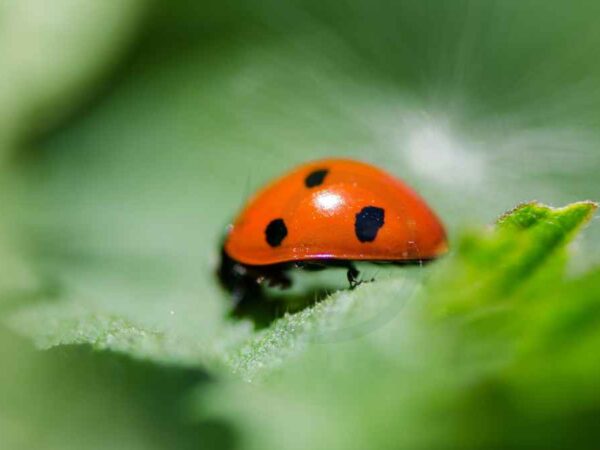When it comes to growing champion tomato plants, the key lies in understanding the right techniques and care required. From seed selection to watering schedules, every detail plays a crucial role in nurturing robust and fruitful plants. By mastering the art of pruning and providing adequate support, you can witness a stark contrast in the yield and quality of your tomatoes. Embracing proper fertilization methods and pest control measures is essential for ensuring a thriving tomato harvest.
Key Takeaways
- Start with Preparation: Ensure proper preparation by selecting a sunny spot, amending the soil with compost, and providing adequate support for your Champion tomato plant.
- Plant Care: Water consistently, mulch to retain moisture, and fertilize appropriately to promote healthy growth and fruit development.
- Monitor Growth: Stay attentive to the growth stages of your Champion tomato plant from seedling to maturity, adjusting care as needed.
- Harvest Wisely: Harvest ripe tomatoes gently, store them in a cool place, and enjoy their freshness in various culinary dishes.
- Health Boost: Benefit from the nutritional value of Champion tomatoes, packed with vitamins and antioxidants for a healthy diet.
- Troubleshoot Effectively: Address common issues like pests, diseases, or nutrient deficiencies promptly to ensure a successful harvest.
Champion Tomato Overview

Unique Characteristics
Champion tomatoes come in a variety of colors and shapes, adding visual appeal to gardens and dishes. These tomatoes are known for their vibrant red hues and round, plump forms. The disease-resistant nature of champion tomato plants makes them a reliable choice for gardeners. They can withstand common tomato plant diseases, ensuring a healthy yield. The exceptional flavor profile of champion tomatoes is a standout feature. They offer a perfect balance of sweetness and acidity, making them ideal for various culinary uses.
Edible Qualities
Champion tomatoes are highly versatile, suitable for salads, sauces, sandwiches, and more. Their rich flavor enhances the taste of any dish they are added to. In addition to their delicious taste, champion tomatoes pack a powerful nutritional punch. They are rich in antioxidants, vitamins, and minerals essential for good health. The juicy and meaty texture of champion tomatoes adds depth to recipes, creating satisfying meals.
Champion II VFNT Hybrid
The Champion II VFNT Hybrid tomato plant boasts specific features that set it apart from other varieties. This hybrid plant combines the best traits of different tomato breeds, offering improved disease resistance and higher yields. Growing the Champion II VFNT Hybrid variety provides several benefits to gardeners, including increased productivity and reduced risk of crop loss due to diseases. The disease resistance of the Champion II VFNT Hybrid tomato plant ensures that gardeners can enjoy a bountiful harvest without worrying about common tomato plant ailments.
Preparing for Planting
Soil Requirements
Champion tomato plants thrive in well-draining soil that is rich in organic matter, promoting robust root development. The ideal soil composition should consist of a balanced mix of sand, silt, and clay to ensure proper aeration and moisture retention. Maintaining a pH level between 6.0 and 6.8 is crucial for optimal growth and nutrient absorption by the plants.
To support healthy tomato growth, it is essential to provide a soil environment that allows excess water to drain effectively, preventing waterlogged conditions that can lead to root rot. Well-draining soil encourages the roots to access oxygen efficiently, promoting overall plant vigor and productivity. Champion tomato plants are sensitive to soil pH levels; therefore, maintaining the acidity within the preferred range ensures they can absorb essential nutrients effectively.
Location Selection
When selecting a location for planting champion tomato plants, prioritize areas that receive full sun exposure throughout the day. Full-sun exposure is vital for maximizing photosynthesis and fruit production in tomato plants. Choose a spot that is sheltered from strong winds and extreme weather conditions to protect the plants from damage.
Placing your champion tomato plants in an area with ample sunlight allows them to harness energy efficiently for growth and fruit development. Full-sun exposure promotes sturdy stem growth and abundant flowering, leading to a bountiful harvest of delicious tomatoes. Shielding the plants from harsh weather conditions such as strong winds or heavy rains helps prevent physical damage and stress on the plants, ensuring they can focus on healthy growth.
Planting Techniques

Sowing Seeds
Plant champion tomato seeds by placing them in a seed-starting mix in small containers. Ensure the soil is moist but not waterlogged. Cover the seeds lightly with soil and keep them warm and moist.
The ideal time for sowing champion tomato seeds is typically 6-8 weeks before the last frost date in your area. This allows the seedlings to be ready for transplanting outdoors after the frost danger has passed.
Plant the seeds at a depth of about ¼ inch in the soil. Space them approximately 2 inches apart to allow room for growth without overcrowding.
Transplanting Seedlings
When transplanting champion tomato seedlings, choose a sunny spot in your garden with well-draining soil. Dig a hole slightly larger than the root ball of the seedling.
It's crucial to acclimate seedlings to outdoor conditions gradually before transplanting them into the garden. Start by placing them outside for short periods, gradually increasing exposure over several days.
To minimize transplant shock for seedlings, water them well before transplanting, and ensure they are planted at the same depth as they were in their containers. Water thoroughly after planting to help them establish roots.
Care Essentials
Watering Practices
Champion tomato plants require regular watering to thrive, with consistent moisture crucial for fruit development. Overwatering can lead to diseases, so it's vital to water at the base of the plant.
To meet the watering needs of champion tomatoes, ensure the soil is consistently moist but not waterlogged. Avoid wetting the foliage to prevent diseases like blight.
- Water in the morning to allow excess moisture to evaporate during the day.
- Use mulch around plants to retain soil moisture and reduce evaporation.
Fertilizing Tips
Fertilization is essential for champion tomato plants as it provides them with necessary nutrients for growth and fruit production. Choose a balanced fertilizer with equal parts nitrogen, phosphorus, and potassium.
When fertilizing champion tomatoes, apply a balanced fertilizer every three weeks during the growing season. Avoid excessive nitrogen as it can lead to lush foliage but poor fruit production.
- Consider using organic fertilizers like compost or manure for a more sustainable approach.
- Test your soil before fertilizing to determine its nutrient content accurately.
Pest Management
Common pests that affect champion tomato plants include aphids, hornworms, and whiteflies. Early detection is key to preventing extensive damage from these pests.
For organic pest control, introduce beneficial insects like ladybugs or lacewings that feed on harmful pests. Neem oil and insecticidal soap are also effective against pests while being environmentally friendly.
- Monitor your plants regularly for signs of pest infestation such as holes in leaves or sticky residue.
- Rotate crops yearly to disrupt pest life cycles and reduce infestations.
Champion Tomato Growth Stages
Germination Process
Champion tomato seeds germinate within 5-10 days when kept in warm, moist soil. The germination process is influenced by factors like temperature, moisture, and depth of planting. Providing ideal conditions such as consistent watering and a temperature range of 70-85°F promotes successful germination.
Flowering Phase
During the flowering phase, champion tomato plants produce yellow flowers that eventually turn into fruits. Pollination plays a crucial role in fruit development as it transfers pollen for fertilization. To encourage abundant flowering, ensure proper spacing between plants, adequate sunlight exposure, and gentle shaking to mimic wind for pollination.
Fruit Development
The stages of fruit development in champion tomato plants include flower pollination, fruit set, and maturation. Factors such as nutrition, water supply, and sunlight influence fruit size and quality. Supporting fruit development involves regular watering to prevent cracking, applying balanced fertilizer for nutrients, and pruning to enhance air circulation.
Harvesting and Storage
Picking Tips
Harvest champion tomatoes when they are fully ripe for the best flavor. To pick them without damaging, gently twist the tomato until it comes off the vine. Tomatoes continue to ripen after being picked, so store them at room temperature.
Storage Methods
For fresh champion tomatoes, store them at room temperature away from direct sunlight. To keep ripe tomatoes fresh longer, place them in a single layer with the stem side down. Proper ventilation is crucial to prevent mold growth during storage.
Culinary Uses
Fresh Recipes
Champion tomatoes shine in fresh recipes such as caprese salad, bruschetta, and gazpacho. These vibrant dishes showcase the tomato's juicy texture and sweet flavor. Incorporate them into pasta sauces, salsas, or simply enjoy them sliced with a sprinkle of salt.
To make a flavorful caprese salad, layer thick slices of champion tomatoes with fresh mozzarella and basil leaves. Drizzle with olive oil and balsamic vinegar for a simple yet elegant dish. For a quick bruschetta, top toasted bread with diced tomatoes, garlic, basil, and a touch of balsamic glaze.
Cooking Techniques
Experiment with various cooking techniques to elevate the taste of champion tomatoes. Roasting intensifies their sweetness, while grilling adds a smoky flavor. Consider sun-drying tomatoes for concentrated richness in salads or pasta dishes.
When cooking champion tomatoes, avoid overcooking to retain their nutrients. Quick sautéing or blanching helps preserve their vitamins and antioxidants. Pair them with olive oil, garlic, herbs like basil or oregano, and cheeses like feta or Parmesan for enhanced flavors.
Health Benefits
Nutritional Value
Champion tomatoes offer various health benefits due to their rich nutritional profile. They are packed with vitamins such as A, C, and K, essential for overall well-being. These tomatoes also contain minerals like potassium and folate, crucial for bodily functions.
Consuming champion tomatoes regularly can contribute significantly to a healthy diet. The vitamins present in these tomatoes help in boosting the immune system and promoting good vision. The minerals aid in maintaining proper heart function and supporting bone health.
Dietary Importance
Including champion tomatoes in meals is of great dietary importance. Their high nutrient content supports various bodily functions and helps prevent several health conditions. These tomatoes play a vital role in promoting overall health and well-being by providing essential vitamins and minerals.
Champion tomatoes are a key component of a balanced diet, offering a range of nutrients necessary for optimal health. They help in reducing the risk of chronic diseases and improving digestive health. Incorporating champion tomatoes into meals ensures a diverse nutrient intake for overall wellness.
Troubleshooting Common Issues
Disease Prevention
Champion tomato plants are susceptible to various diseases, including early blight and late blight. These diseases can cause leaf spots, stem rot, and fruit decay. To prevent these issues, ensure good air circulation around plants and avoid overhead watering.
Implementing crop rotation practices can also help reduce the risk of disease. Early detection of any signs of disease is crucial for effective treatment. Remove and destroy any infected plant parts promptly to prevent further spread.
Growth Challenges
Growing champion tomato plants may come with challenges like nutrient deficiencies, pest infestations, and extreme weather conditions. To overcome these obstacles, conduct soil tests regularly to ensure proper nutrient levels for healthy plant growth.
Using organic fertilizers and mulching can improve soil quality and provide essential nutrients for the plants. Installing physical barriers or using natural predators can help manage pest issues without relying on chemical pesticides.
Ensure consistent watering schedules to prevent stress on the plants during hot weather. Prune the plants regularly to promote airflow and reduce the risk of fungal infections. By following these strategies, you can support optimal growth and achieve a successful harvest.
Summary
You've learned all about champion tomato plants, from planting to harvesting. Remember to prepare the soil well, plant your seedlings properly, and provide adequate care throughout the growth stages. Pay attention to common issues and troubleshoot them promptly for a successful harvest. Champion tomatoes not only offer delicious culinary uses but also come with various health benefits. Now that you're equipped with this knowledge, it's time to get your hands dirty and start growing your own champion tomatoes. Happy gardening!
Frequently Asked Questions
How do I prepare the soil for planting Champion Tomato plants?
To prepare the soil for planting Champion Tomato plants:
- Choose a sunny location with well-draining soil
- Amend the soil with compost or organic matter
- Ensure the pH level is around 6.0 to 6.8
- Remove any debris or weeds from the area
What are some key care essentials for Champion Tomato plants?
Key care essentials for Champion Tomato plants include:
- Watering consistently, ensuring the soil is moist but not waterlogged
- Providing support for the plant as it grows
- Fertilizing regularly with a balanced fertilizer
- Monitoring for pests and diseases and taking appropriate action
At what growth stages should I expect my Champion Tomato plants to be?
Champion Tomato plants go through several growth stages:
- Seedling stage: 1-3 weeks after planting
- Vegetative stage: 3-5 weeks after planting
- Flowering stage: 5-8 weeks after planting
- Fruit development stage: 8+ weeks after planting
How can I troubleshoot common issues with my Champion Tomato plants?
To troubleshoot common issues with Champion Tomato plants:
- Yellowing leaves: may indicate nutrient deficiency or overwatering
- Pests like aphids or caterpillars: use organic pest control methods
- Blossom end rot: caused by calcium deficiency, ensure consistent watering
What are some popular culinary uses of Champion Tomatoes?
Champion Tomatoes are versatile and commonly used in:
- Salads and sandwiches for their juicy texture and flavor
- Pasta sauces and salsas for added freshness
- Roasted dishes to enhance sweetness
Image Source: Paid image from CANVA



